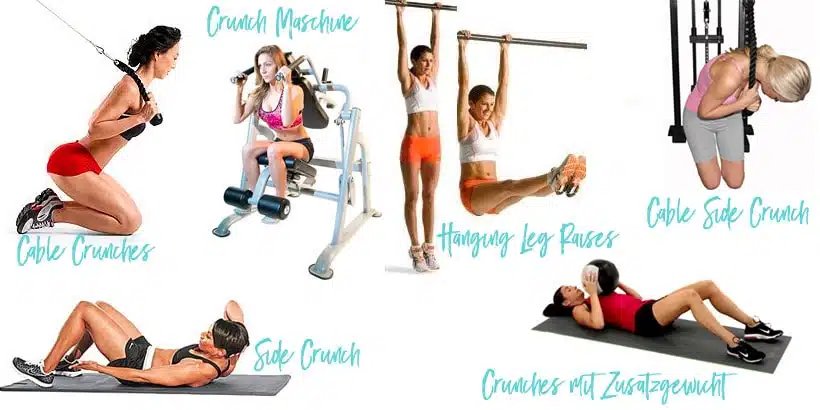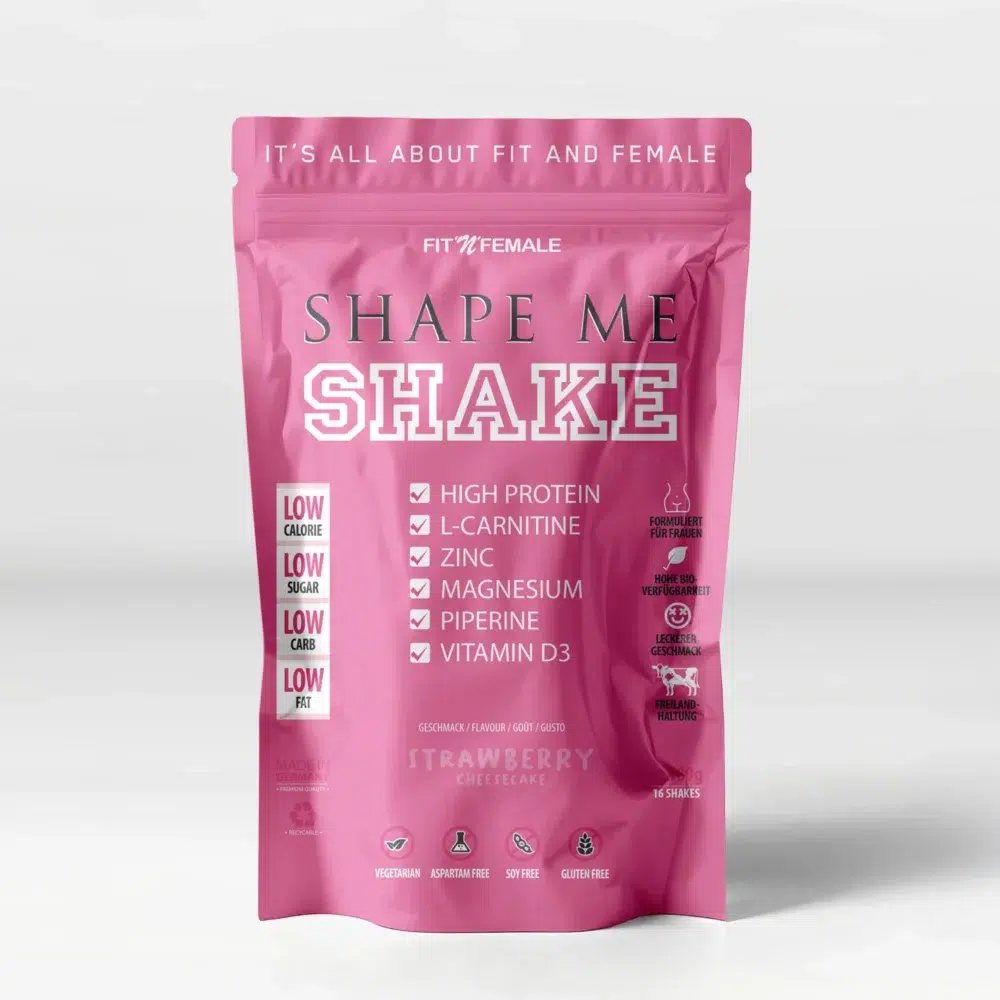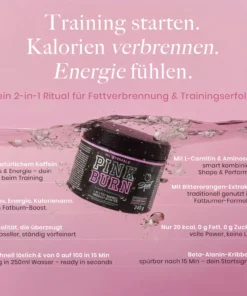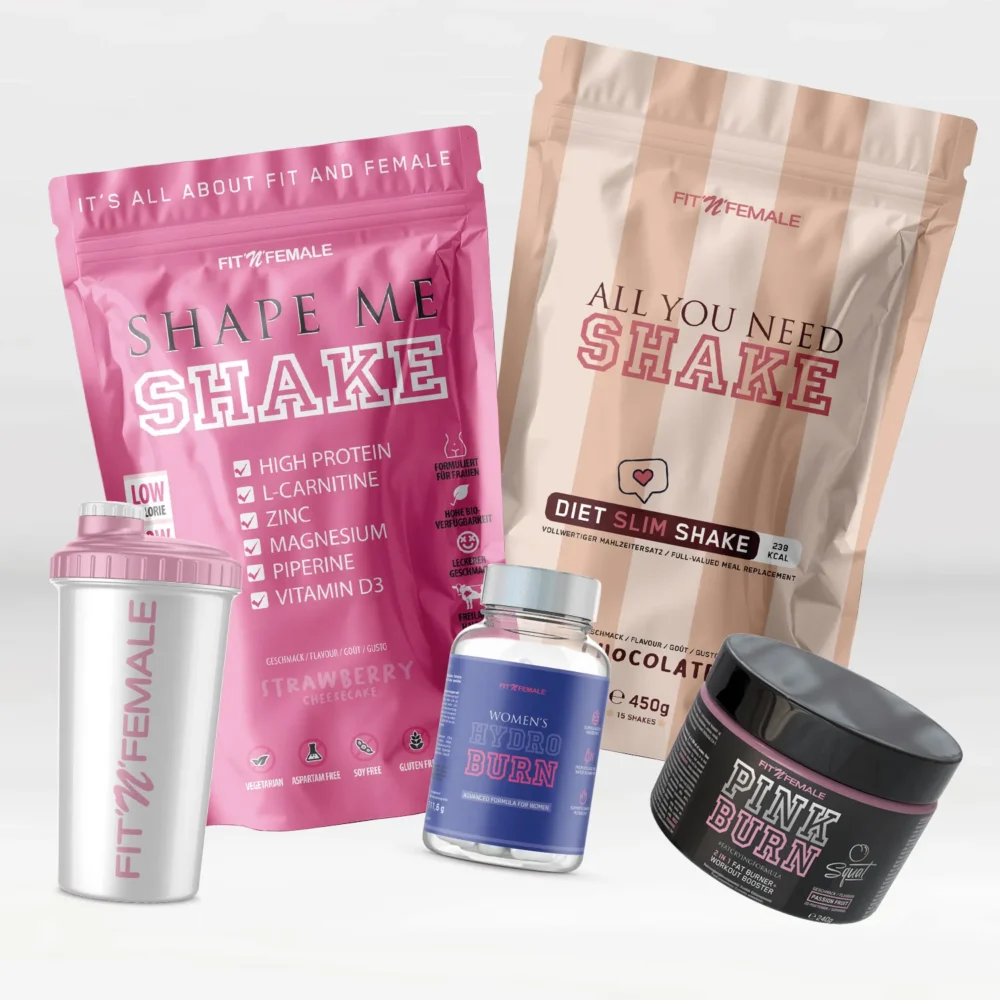A defined six-pack is still the fitness symbol par excellence. No wonder that most athletes also work towards being the proud owner of such a six-pack one day. This image is confirmed if you ask experienced trainers. You can be sure that in their careers they almost certainly haven't had a client who didn't want to work on their body's center to look good or strengthen their core for another sport.
The reasons may be different, but the goals are the same. But then why don't all of us walk around with a six-pack and thus correspond to the ideal image of the fitness lifestyle? Quite simply because it takes a lot of work and above all discipline to build up a six-pack and then to keep it permanently. So how can you do it too?
How to build a defined six pack
Simply "only" to develop strong abdominal muscles or to bring the abdominal muscles in a suggestive six-pack to the appearance, is actually not so difficult. However, most athletes who try it do not get beyond this stage. Either because they don't want to or because they are afraid of the work. Because getting a six-pack that makes other people's jaws drop at the sight of it is quite another matter.
And we want to be honest: This status is also only achieved by those of you who are willing to work extremely hard and sacrifice quite a bit for the six-pack dream. But don't let these words scare you off, because with our guide your belly will soon look like this.
What it takes? A plan that gives you a clear direction and gives you some guidance in the areas of nutrition, cardio and strength training. Here we go. Let's work on your six pack!
Item 1 - Your diet
Let's start without much theorizing: It doesn't matter at all how good your abs already are through more or less ambitious abdominal training. Under a thick layer of body fat, they look anything but impressive in any case. Abdominal muscles need to look like well laid cobblestones - voluminous and with deep transitions between the individual packs.
In practice, this means that you have to reduce your body fat percentage until only a thin layer of skin blocks the view of your six-pack. And since "the kitchen is where it's defined," the first place to start is with high-quality foods to meet your macronutrient needs - not to mention a moderate calorie deficit.
Good source of nutrients for six pack nutrition
- Protein: lean beef, turkey, chicken, venison, salmon, white fish, egg white, resin roller, protein powder, etc.
- Carbohydrates: Whole grain pasta, brown rice, white rice, sweet potatoes, potatoes, whole grain bread, oatmeal, quinoa, rice cakes, fruit, etc.
- Fat: Peanuts, walnuts, almonds, avocado, olive oil, flax oil, nut butter, fish oil or fish oil capsules, etc.
- Vitamins, minerals, fiber: all kinds of colorful and green vegetables
Highly dosed and fast, you can also easily control the last point with the following products. Depending on your needs, a different product is suitable for you.
- 24 Vitamins & Minerals - The All-In-One Vitamin & Mineral Tablets
- Stay in Balance - An optimal combination of basic trace elements & mineral salts to improve the acid-base balance.
- Women's Magic Mix - The all-in-one drink for skin, hair, nails, shaping & appetite control!
- Magnesium citrate - Highly available magnesium as a delicious drink.
So that you can start planning your diet right away, we would like to give you a short sample of an exemplary day. For the sake of clarity, we assign the corresponding foods to the three macronutrient categories "carbohydrates", "proteins" and "fat".
Meal 1
- Protein: Protein powder (Shape Shake / Whey) 2 Scoops
- Carbohydrates: 100 grams of oatmeal (tender / crunchy)
- Fat: no additional fats
The delicious top seller, ideal as a meal replacement:
Meal 2
- Protein: 250 grams of chicken breast
- Carbohydrates: 200 grams of brown rice (weight after cooking).
- Fat: no additional fats
Meal 3 (Pre-Workout)
- Protein: 250 grams of tilapia (tilapia)
- Carbohydrates: large mixed salad
- Fat: 1 teaspoon olive oil
Meal 4 (Post-Workout)
- Protein: Whey Protein 2 Scoops
- Carbohydrates: 300 grams of potatoes
- Fat: no additional fats
A true wonder of versatility & basic supplement at the same time:
Meal 5
- Protein: 250 gram rump steak
- Carbohydrates: 175 grams of sweet potatoes
- Fat: no additional fats
Meal 6
- Protein: Casein Protein 2 Scoops
- Carbohydrates: none
- Fat: peanut butter (without added sugar)
The bottom line is that you get a good 300 grams of high-quality protein, 200 grams of carbohydrates and a good 30 grams of essential fats. Of course, depending on how heavy you are, minor adjustments will need to be made to ensure that the amounts of food you eat are exactly what you need. While you are losing body fat, you must also make sure that you adjust your calorie intake weekly, or at least every two weeks. After all, your overall calorie needs will also decrease.
The lower you get with your body fat percentage, the further you should also reduce your calorie deficit. In this way, it takes longer until you get rid of the last body fat above your six-pack. On the other hand, you also reduce the risk of losing the muscle mass you have built up with great effort. This is the mistake that most people make when they train and are later annoyed by their "skinny six-pack", which looks anything but sexy.
Point 2 - The cardio training
Yes, now we come to the rather unpleasant part for most, because long cardio workouts are not necessarily the favorite discipline of strength athletes. Of course, there are some genetic freaks out there who have such a high metabolic rate that no supplemental cardio training is necessary at all.
However, it is most likely that you do not belong to this group. This means that you can't rely on a balanced diet alone for your "washboard abs" project, and your body will already do the rest. So you can't avoid cardio workouts.
However, before you start cursing, you should be aware of a few things. For example, that endurance or fat metabolism training is not necessarily a bad thing for us "normal mortal" strength athletes. And of course, not in terms of fat loss, but also in terms of strengthening the cardiovascular system. Because this is exactly the weak point of many strength athletes. Or haven't you ever wondered why the guys with the fattest arms are the ones who pant first when moving? So how can you incorporate cardio training in a meaningful way?
1. perform the cardio workout at the right time.
To keep the cardio training as short as possible, you should include it exactly when it makes the most sense and the body provides the optimal "template" for fat burning. The best times for cardio training are therefore directly in the morning after getting up and immediately after strength training. Why? Because at both times of the day the muscle glycogen stores are relatively empty and the blood sugar level is comparatively low. This in turn forces the organism to switch increasingly to fat as an energy source.
2. use both slow and steady cardio and HIIT cardio
In the fitness community, there is still a debate about which form of cardio training is better - "slow and steady" (SS) or "high intensity interval training" (HIIT)? We keep it pragmatic: Both forms have their justification and should therefore be used in combination to load the organism as versatile as possible. For example, in the morning you can jog around the park and on another day you can really work out in HIIT style on a bike ergometer directly after strength training. The important thing is that you keep up the training regularly, even if it's not fun.
3. increase regularly
To avoid overloading yourself, don't start from "0 to 100" and do 60 minutes of cardio every day. Start slow and aim to do 20 to 30 minutes of cardio three or four days a week. Work your way up on a weekly basis by slowly increasing the amount of cardio in 5-minute increments, swapping out a less intense session for an intense one, or even adding a fifth cardio day.
4. divide your cardio workout
Sometimes it's better to do several short bursts of exercise in one day instead of one long one. You can also easily apply this principle to cardio training by dividing your daily program of, say, 60 minutes into two sessions. One session right after getting up in the morning and a second session after a workout or in the evening before dinner to really boost your metabolism.
5. motivation despite fatigue? Yes, you can!
Who doesn't know this? Little sleep, hard work and then there is still cardio or even HIIT on the training schedule. A good helper/friend in such cases can be the Pink Burn. Its ingredients accelerate the metabolism up to three times and boost fat burning. In addition, and this is almost more important in this case, it provides you with energy. Already 20 minutes after taking it, you will notice an intentional tingling sensation in your body and you can't help but go work out.
If you work out in the evening and still want a caffeine-free energy boost, we recommend Night Burn (3 in 1 fat burner, workout booster and appetite control).
Point 3 - The abdominal muscle training
Why abdominal training comes only third? Because a healthy diet and an adapted cardio program play a more important role when it comes to building a six-pack. Nevertheless, well-tuned strength training is essential to give the abdominal muscles a certain thickness, because only then do the muscles really stand out. And even many competitive athletes with single-digit body fat percentage feel the same way. With the following rules it will be different for you.
The "Ab-Training-Rules
- Train the abdominal muscles twice a week
- Treat your abs like any other muscle
- Perform the repetitions slowly and focus on the muscle tension
- Use additional weights so that you can train effectively even in low repetition ranges
- Build in sets of 10-20 repetitions, performing each one to failure
- Make sure you do exercises for the upper, lower and lateral part of the abdominal muscles
- Find an exercise that makes you feel your muscles best and keep it as a core element of your abdominal workouts
Exercises for your six pack

- Cable Crunches
- Crunch machine (sitting)
- Hanging Leg Raises
- Cable Side Crunch
- Side Crunch (prone)
- Crunches (with additional weight)
The POWER/REP RANGE/SHOCK(TM) - Sixpack workout
This training system is a cyclic training method that allows you to set a very individual hypertrophy stimulus each week. The following list shows you how your abdominal training could look like.
"Power Week"
- Crunches with additional weight (2-3 sets / 10-12 repetitions)
- Hanging Leg Raise (3-4 sets / 10-12 reps)
"Rep Range Week"
- Cable Crunch (2-3 sets / 13-15 repetitions)
- Hanging Knee Raise (2-3 sets / 16-20 reps)
- Side Crunch lying (2-3 sets / 21-25 repetitions per side)
"Shock Week"
- Crunch machine (2 sets / 16-20 repetitions drop set)
- Hanging Leg Raise (2 sets / 16-20 repetitions)
- Hanging Knee Raise (2 sets / 16-20 repetitions)
- Cable Side Crunch (1 set / 15 repetitions "Rest Pause to Failure")
So that your muscles don't get too used to the training program, you should at least partially swap the exercise after two complete cycles, i.e. 6 weeks. Of course, you can also incorporate completely different abdominal exercises.
[adinserter block="9″]As you can see, there is no magic formula that will help you build a six-pack. All it really takes is hard work, discipline and the understanding that the abdominal muscles are a muscle group like any other.
Our Premium Fatburn Bundle supports you additionally with coordinated supplements and intake plan to get even closer to your goal:














